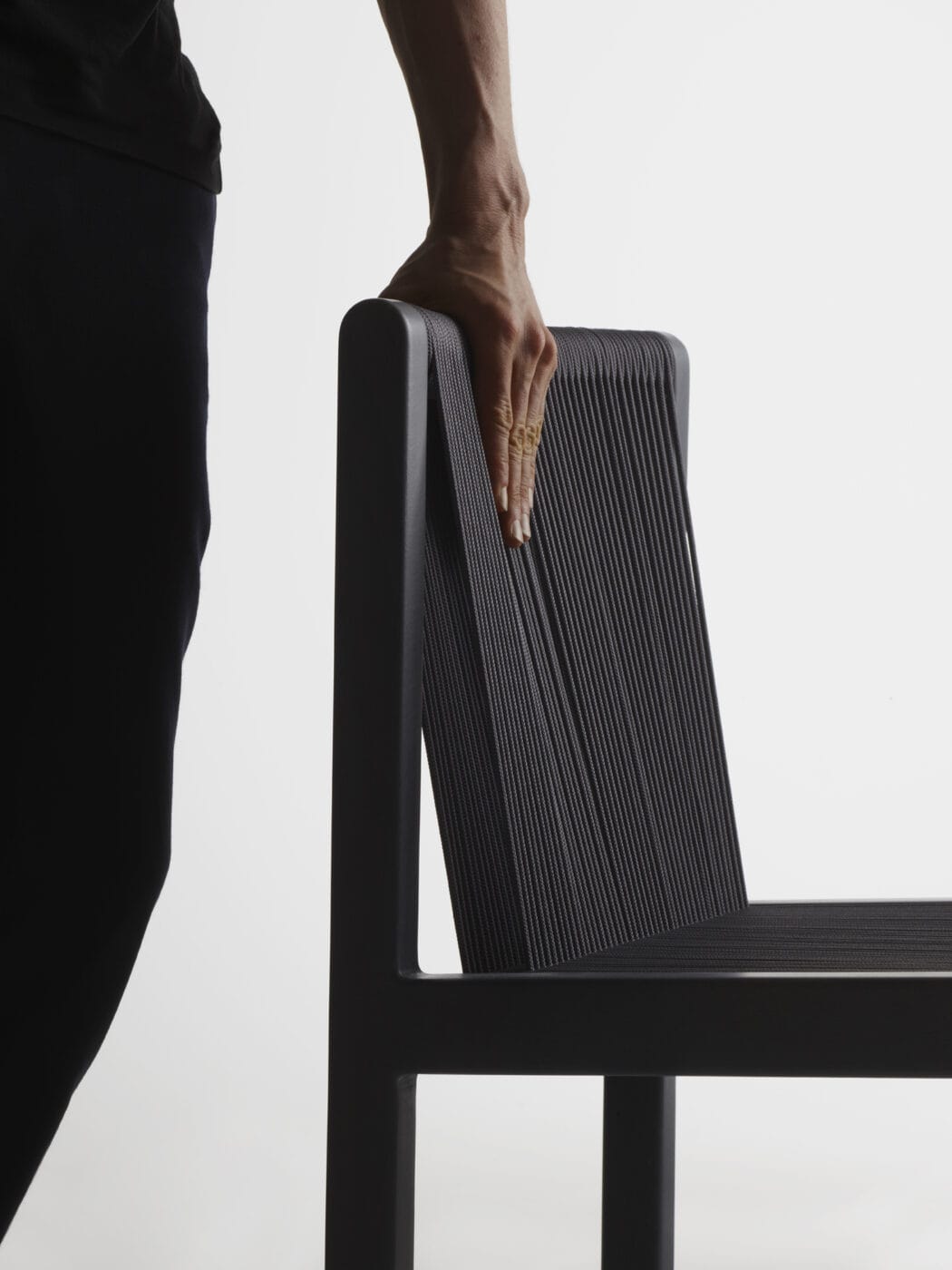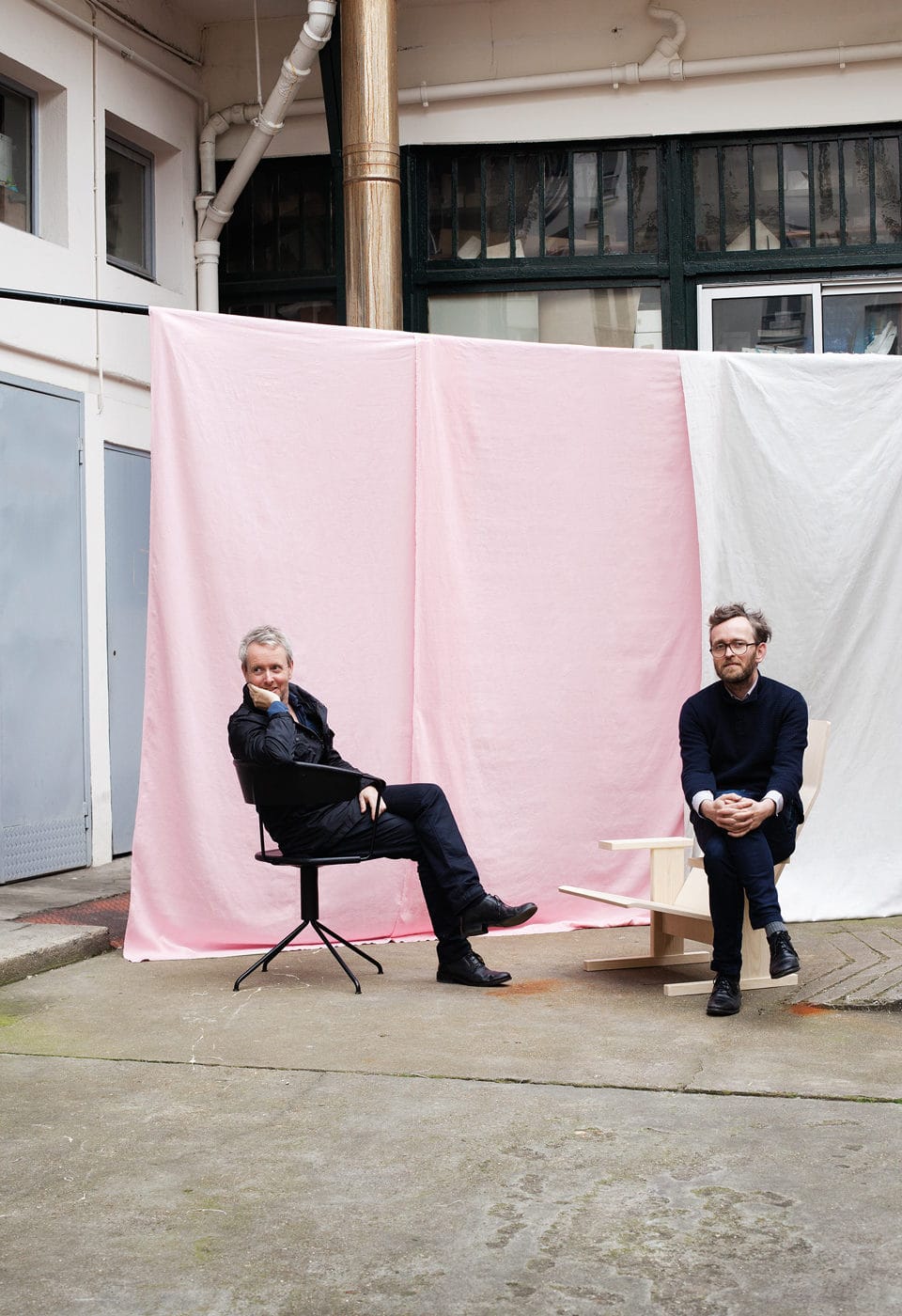
2021 / FILO CHAIR
Ronan & Erwan Bouroullec
The interview with Kim Colin
KIM: Bonjour Ronan! I’d like to talk to you about FILO, to hear your thoughts on how it
came about, and to hear what still interests you.
RONAN: FILO is a chair which is not so easy to grasp. It’s a chair in which the real object
is very nice, but can be difficult to see it only in a photograph. It’s a chair that works very
well in multiples and also when you put it around rectangular tables; the geometry
created is very appealing.
K. Sam and I have talked about FILO as quite a graphic piece. If you see it from the side,
you could say that the frame is almost typographic, like a letter. The lines of fabric cord
are also very graphic; yet these lines distort as the body sits down. A person makes these
distortions stronger as they move and adjust. We know you draw a lot – and you make a
lot of lines, and you repeat these lines to ‘find’ form. Do you see a connection between
the two – the drawing and FILO?
R. It’s interesting because when I published a detail of the chair recently, someone
noticed the relationship between FILO and my drawings. How can I say – it’s probably an
inverse to this, because when I draw, I build a shape from the addition of lines and this
addition creates a shape and generates a form. It’s like using clay, when you build up
part after part into form. But FILO has been conceived differently because it was first a
structure, a geometry, and it was filled afterwards with these lines. So there is a
fundamental difference between my drawings and the way I work as a designer. My
drawings are totally organic, and it’s something that I try without thought. It is not
something that I have planned, a line plus a line plus a line. It’s extremely intuitive and
something that I build in the moment. Whereas design is a process of reflection, a
thought that is an analysis for a company, and what we can do; it’s an intellectual and
physical process. We make a lot of mock-ups, so I build, like the drawing, step after step,
but there is a lot of thought, whereas in the drawing I try to escape. I never have an idea
before I do a drawing. In fact, I oblige myself to not have an idea before.
K. So it’s a difference between using the lines in a drawing to find form, whereas in FILO
the ‘outline’ came first, to support the lines within?
R. That’s right.
K. What was the first idea for FILO and how did it evolve; can you describe the process a
bit?
R. After some years of work for Mattiazzi, I tried in this research to apply what I learnt
from the years before (from the factory, from the result and from the sales too) to try to
build a structure that isn’t using too much wood, that is intelligent in the connections,
that is trying to build a structure with what I know, with my knowledge, to find an easy
way to build, a good solution to not have too much wasted wood. Unlike previous
Mattiazzi projects I use beech (hêtre), and then stain it at certain densities so that it is
becoming something else. That was the beginning. We worked almost 2 years around
this question of what can be the delicacy of a chair structure, and do we need to
reinforce it?
I remember at the beginning it was a chair that needed a lot of reinforcement for the
seat, but step after step we increased certain sections and modified the way it was
linked. The assemblage of these elements arrive at what you describe – an almost
typographic work. It is a mix between trying to clean a structure to its maximum yet at the
same time keeping it strong enough to resist the problems we all know – ‘the norms’ of
what a chair must accomplish, and how to address these things.
K. Can you tell me what kind of a sit it is– how would you describe it?
R. Well, confort to me is very important. It is an important part of the ergonomie of things
and something that I care a lot about. Of course there are different levels. FILO is not the
most ergonomic chair that we’ve designed, but I think it’s a good chair in the sensibility
of the fact that there are many varieties of seat. There is little elasticity of the yarn and
this makes the comfort good for a simple chair made really of only some pieces of wood
and some yarn! My way to test a chair is to have a long dinner on it – it is the only way for
me to verify its ergonomie. Of course I did this – It is a test that I consider the most
important. Ideally the best way to do this test is to make sure the dinner is very boring.
You can concentrate on the chair and not the conversation!
K. How interesting. Would you say it is also a bit of a departure from the softness that I
am used to in your work?
R. Yes, I think FILO is a chair that is new in the vocabularies that I use. It has a section
which is perhaps American in its dimension. I think it’s very well composed in the sense
of its lines, the tension and the radius, but it’s a bit more square than my usual work. I
think there’s something quite robust in it and I think it’s new. Now I use it every day, in
front of my desk, and I’m happy with it. I’m happy to see people sitting in it who come to
have a meeting with me.

